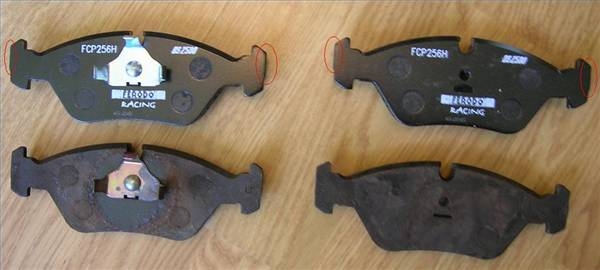
Brake pads are a consumable part of a vehicle's braking system and are specifically designed to wear out over time. Brake pads are the point of friction in a braking system. Friction causes erosion and brake pads are designed to be the brake system component that erodes. Because the brake pads are consumable, other parts of the brake system can be designed to wear less quickly while still remaining effective. When your brake pads need to be replaced you will need to buy brake pads that are suited to your vehicle and driving style.
Confirm that you need brake pads. Brake problems may not be related to the pads themselves. If brake pads do need to be replaced you may hear a high-pitched squealing sound when braking. Other indicators include pull (where your vehicle pulls to one side when you brake), brakes that grab or vibrate during regular braking and a decrease in resistance when pressing the brake pedal.
Select a type of brake pad. Semimetallic pads are durable but can quickly wear down rotors. Non-asbestos organic (NAO) pads are softer but wear down faster. Low-metallic NAO pads provide excellent braking but can be noisy. Ceramic pads are particularly good at braking and do not excessively wear down rotors but are the most expensive.
Select a certified brake pad. There are two forms of certification, D3EA and BEEP. The Consumer Reports non-profit consumer products ratings organization recommends you seek D3EA certification rather than BEEP.
Select a grade of brake pad. Standard certified pads are sufficient for normal driving. However, if you regularly drive on steep inclines, use your vehicle for towing or in some other way make high demands on your brake pads, consider an upgraded, heavy-duty pad.
Confirm the specific size of brake pad and check for any vehicle-specific requirements or specifications in your vehicle's owner's manual.